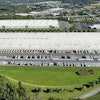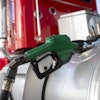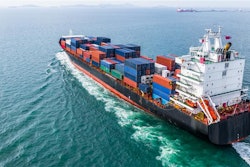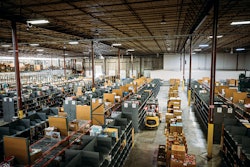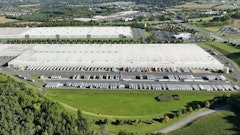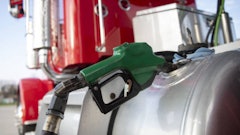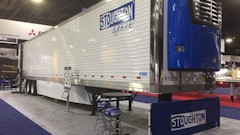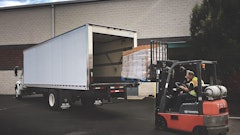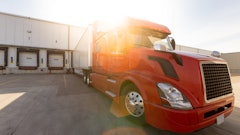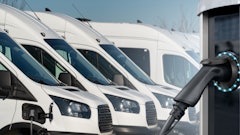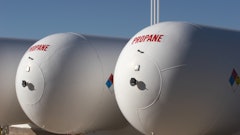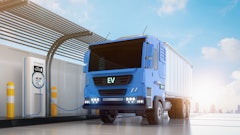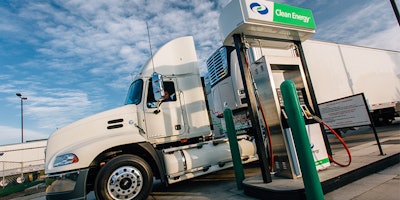
Organizations around the world—from governments to companies of all sizes—are increasingly acknowledging the need for a societal shift toward economic resilience, social mobility and environmental stewardship. This focus has also proliferated into the trucking industry, as innovate rapidly accelerates. There are pivots toward greater use of automation and clean fuel technology in long haul platforms. In that context, there are a number of areas in which clean fuel, autonomous vehicle (AV) technology can help improve efficiencies for refrigerated shipping and trucking, including benefits to consumer/small businesses, potential to address labor shortages and autonomous/zero emission fuel synergies.
Consumer/small businesses
Consumers are demanding quicker and more efficient services, spurred by the rapid growth in e-commerce and amplified by the global pandemic. Nearly 88% of consumers say they are willing to pay extra for same-day delivery or faster shipping methods. As of 2020, 43% of online shoppers are now selecting same-day delivery. In this reality the following consumer expectation will drive the future of long haul and cold chain systems.
● Expectations increasing for rapid shipments. In 2016, online shoppers expected to wait 4.8 days for a package delivery. In 2020, the largest percentage of shoppers (48%) say they typically receive a package in 2-3 days. Meanwhile, as of May 2019, Amazon was able to offer same-day delivery and next-day delivery to 72% of the U.S. population. This increasingly offers opportunities for perishable products that require cold-chain services.
● Tension between delivery, profitability and customer satisfaction. One in 12 small businesses close every year. Yet, 90% of Americans shop at small businesses weekly, and small businesses create 66% of new jobs annually. Consumers care about small businesses, but they also crave fast shipping. This offers the potential to proliferate logistical services to businesses of all size and type.
● A space for clean fuel AVs to play. AV technology - both in trucking, package delivery, and refrigerated/cold chain application - promise to reduce shipping costs and likely increase delivery speed. As small businesses contend with increased consumer demand for next-day delivery, AVs could present a sustainable solution. They may become even more attractive as logistical platforms change—for example last-mile delivery robots that offer automated deliveries door-to-door. This continued innovation will yield new ways to reimagine how companies can efficiently deliver goods from production facilities to the consumer at a speed and profitability margin that supports economic growth.
Driver shortage and autonomy
At the same time, while the long-term impacts of automated and autonomous technology on long-haul routing remain to be seen, the trucking industry faces near-term labor. In 2019, the industry had a shortfall of roughly 60,000 drivers, roughly unchanged from the year previously after ballooning from just 10,000 in 2017. The following megatrends understand the need opportunity for autonomous technology.
● A labor shortage that is likely to increase. While the latest jump in labor shortages was likely in part due to frictional challenges in delayed retirements and training of new drivers as a result of the 2008-2012 recession, the shortage of labor expected to double by the end of the decade as the industry faces drivers who have now decided to retire. Reports show the need of roughly 1 million new drivers by 2028, and 54% will be the result of driver retirement.
● Autonomy and trucking. While over the longer-term autonomous driving technology could help close this labor shortfall, near-term Level 2 and Level 3 driver-assist technologies could attract new drivers, as well as expand operational capacity as shifts can be complemented by new AV systems.
● Potential cost savings for refrigerated trucking. Specifically to cold chain and refrigerated trucking, this could also increase efficiencies for operators, while also potentially improving job quality. With hauls completed in less time, the fuel consumption from continuous duty refrigerating units could drop. Innovation in electric and hydrogen technology could increase these savings.
Clean fuel and autonomous synergies
While broad market adoption of EV trucks is likely a few years away, AV systems are likely to be paired with electric and/or hydrogen freight vehicles, which can allow them to achieve even greater benefits in the future. Long-haul clean fuel trucking platforms could decrease fuel costs and help address emissions in the transportation sector—which accounts for 16% of global greenhouse gas emissions. Moreover, co-combustion technology companies are showing promise that hydrogen can be used in existing Class 8 vehicles, offering the savings and emissions reductions of clean fuel in existing fleets.
● Achieving reductions in air pollution. There is considerable regulatory focus on reducing heavy duty vehicle pollution along major highway corridors and in local communities due to health impacts, particularly high with refrigerated freight. One 2015 study found that a fleet of 1 million refrigerated truck units had the same environmental pollution equivalent of up to 56 million diesel cars due to higher fuel consumption. Transitioning these trucks hydrogen and eclectic fuels will help address this and could drastically reduce carbon pollution.
● Fuel savings of autonomy for refrigerated freight. One study, conducted by TuSimple and the University of California San Diego, found that autonomous technology can reduce fuel consumption by as much as 10% for heavy duty trucks. When considering the overall higher fuel consumption of refrigerated/cold chain vehicles and the associated air pollution, this fuel savings could benefit not only fleet operators but also collective environmental goals.
Summary
The coming years will reveal substantial advancements in autonomous technology, but also in the proliferation, transmission, distribution and storage of clean fuel technology. Both of these innovations stand to increase the efficiency, profitability and sustainability of long-haul trucking operations. Specific benefits include increased services to small business, ability to meet labor demands and the opportunity to embrace a hydrogen and electric fleet. While there may be obstacles that slow the pace of the technology adoption, they are not insurmountable. Moreover, global attention to economic resilience, social mobility and environmental stewardship across sectors will continue to accelerate the transition to clean, automated technology in the logistics sector over the next the decade.

